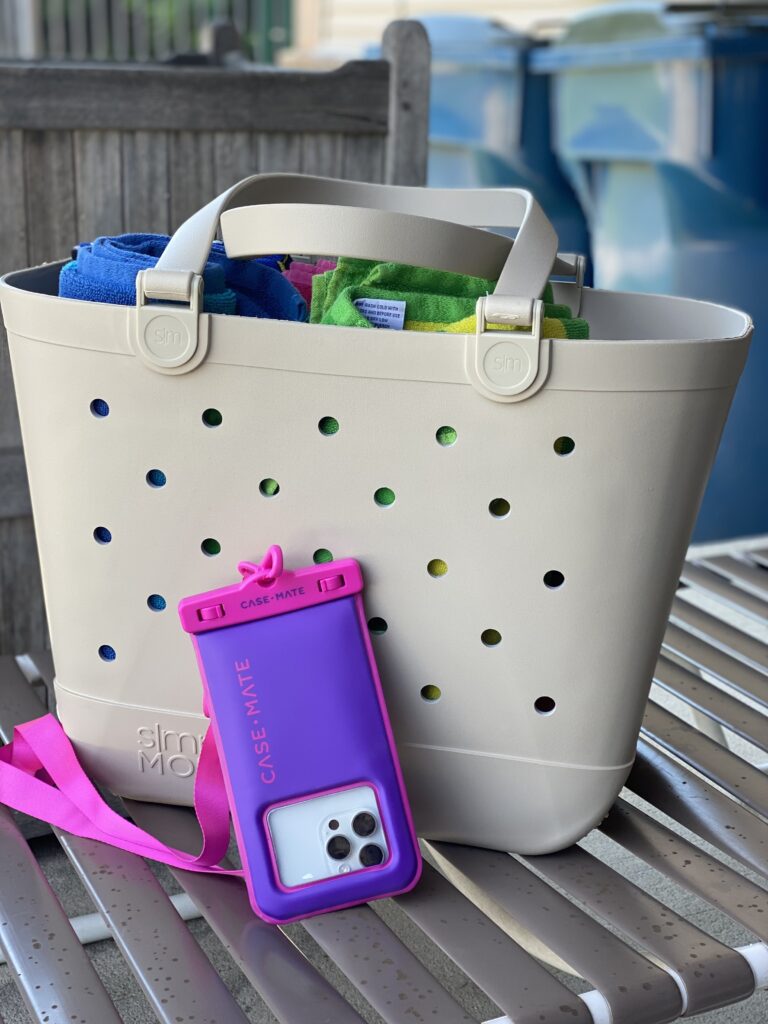1. Don’t skip the tour.
Visit the pool before lessons begin so your toddler can see the space without the pressure of jumping in. Let them sit by the water and watch other kids having fun.
2. Set zero expectations the first few days.
Crying? Clinging? Totally normal. Keep your vibe calm and upbeat, even if they only dip a toe. Small wins matter.
3. Stay consistent.
If it’s a Monday–Thursday program like ours, show up every day. That routine builds familiarity, which builds trust.
4. Pack smart.
Bring:
- 2 towels (one for drying, one for sitting/wrapping)
- Swim diapers (extras!)
- Easy on/off clothes
- A snack and water bottle for after
- A favorite toy or comfort item for reassurance
5. Let the instructor lead.
Even when they’re crying, try to stay close but let the instructor take charge—it helps them build that swimmer-teacher connection.
6. Practice at home—in the bath!
Reinforce skills like kicking, blowing bubbles, or floating on their back in a fun, low-pressure way in the tub.
7. Celebrate progress (even the tiniest).
A “you didn’t cry today!” or “you held the wall all by yourself!” goes a long way. Keep the praise specific and simple.
8. Avoid bribes, but reward effort.
Instead of candy or toys, offer extra storytime, playground visits, or a “Swim Star” sticker chart to motivate gently.
9. Don’t compare.
Every toddler is on their own timeline. Some jump in headfirst (literally), others warm up by week two. Both are doing just fine.
10. Trust your gut—but give it time.
If something truly feels off with the program or teacher, speak up. But don’t give up too quickly—new things are hard for toddlers, and sometimes they need a little longer to bloom.
